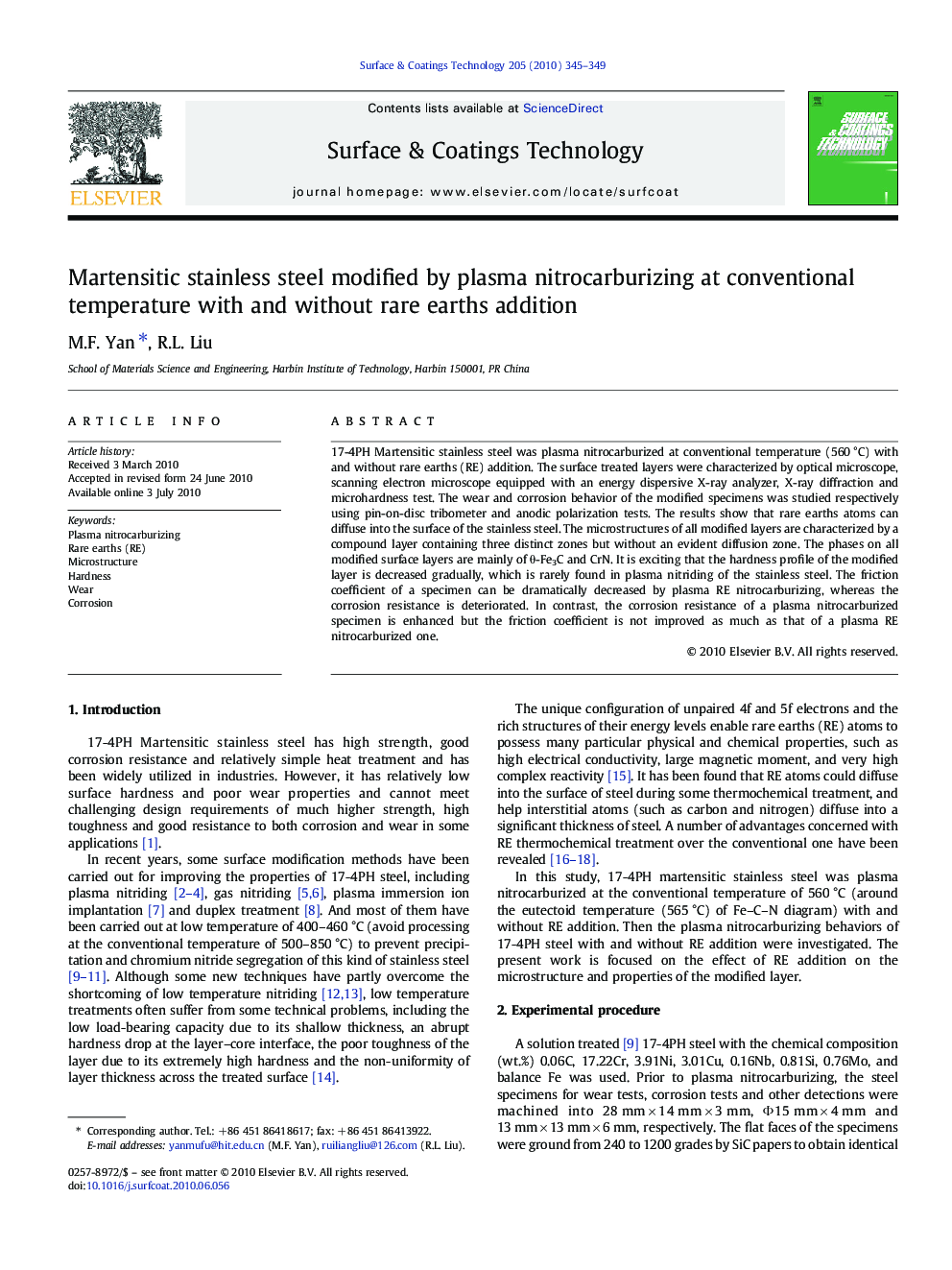| Article ID | Journal | Published Year | Pages | File Type |
|---|---|---|---|---|
| 1659072 | Surface and Coatings Technology | 2010 | 5 Pages |
17-4PH Martensitic stainless steel was plasma nitrocarburized at conventional temperature (560 °C) with and without rare earths (RE) addition. The surface treated layers were characterized by optical microscope, scanning electron microscope equipped with an energy dispersive X-ray analyzer, X-ray diffraction and microhardness test. The wear and corrosion behavior of the modified specimens was studied respectively using pin-on-disc tribometer and anodic polarization tests. The results show that rare earths atoms can diffuse into the surface of the stainless steel. The microstructures of all modified layers are characterized by a compound layer containing three distinct zones but without an evident diffusion zone. The phases on all modified surface layers are mainly of θ-Fe3C and CrN. It is exciting that the hardness profile of the modified layer is decreased gradually, which is rarely found in plasma nitriding of the stainless steel. The friction coefficient of a specimen can be dramatically decreased by plasma RE nitrocarburizing, whereas the corrosion resistance is deteriorated. In contrast, the corrosion resistance of a plasma nitrocarburized specimen is enhanced but the friction coefficient is not improved as much as that of a plasma RE nitrocarburized one.
